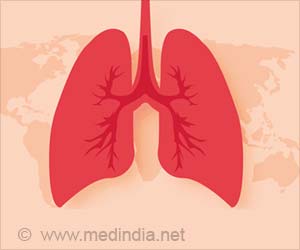Scientists have discovered two novel ways of killing the bacteria that cause tuberculosis (TB).
According to researchers at Albert Einstein College of Medicine of Yeshiva University, their findings could lead to a potent TB therapy that would also prevent resistant TB strains from developing."This approach is totally different from the way any other anti-TB drug works. In the past few years, extremely drug resistant strains of TB have arisen that can't be eliminated by any drugs, so new strategies for attacking TB are urgently needed," said William R. Jacobs, Jr., the study's senior author and professor of microbiology and immunology and of genetics at Einstein, as well as a Howard Hughes Medical Institute investigator.
Tuberculosis is caused by the bacterial species Mycobacterium tuberculosis. In searching for a new Achilles' heel for M. tuberculosis, Jacobs and colleagues focused on an enzyme called GlgE.
Previous research had suggested that GlgE might be essential for the growth of TB bacteria. GlgE would also be an excellent drug target because there are no enzymes similar to it in humans or in the bacteria of the human gut.
The GlgE research revealed a previously unknown enzymatic pathway by which TB bacteria convert the sugar trehalose (consisting of two glucose molecules) into longer sugar molecules known as alpha glucans - building blocks that are essential for maintaining bacterial structure and for making new microbes through cell division.
GlgE was the third of four enzymes involved in this pathway leading to alpha glucans molecules.
Advertisement
"We were amazed when we knocked out GlgE that we saw this DNA damage response. That's usually a very effective way to kill bacteria, when you start damaging the DNA," Jacobs said.
Advertisement
When the researchers knocked out one of the other enzymes in their novel pathway, the pathway's shutdown didn't kill the bacteria; similarly, inactivating an enzyme called Rv3032 in the second alpha glucan pathway failed to kill the microbes.
But inactivating both of those enzymes caused what the researchers term synthetic lethality: two inactivations that separately were nonlethal but together cause bacterial death.
"The bacteria that cause TB need to synthesize alpha glucans. And from the bacterial point of view, you can't knock out both of these alpha glucan pathways simultaneously or you're dead. So if we were to make drugs against GlgE and Rv3032, the combination would be extremely potent. And since TB bacteria need both of those alpha glucan pathways to live, it's very unlikely that this combination therapy would leave behind surviving bacteria that could develop into resistant strains," Jacobs said.
Jacobs adds that findings from this study could also enhance treatment of diseases caused by other species of mycobacteria.
The research has been published in the March 21 online issue of Nature Chemical Biology.
Source-ANI
SRM












